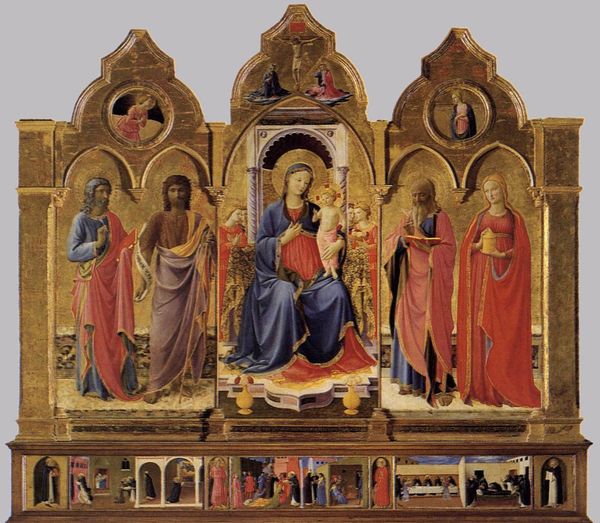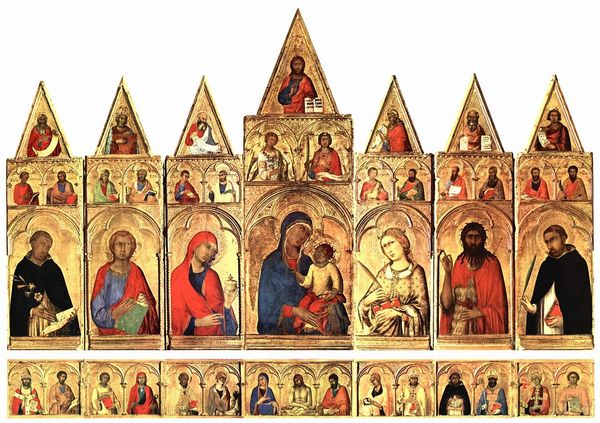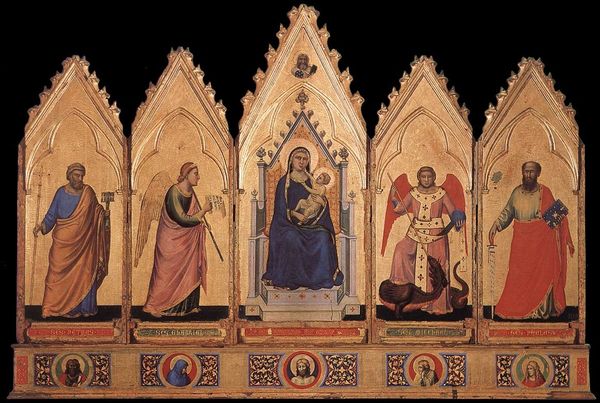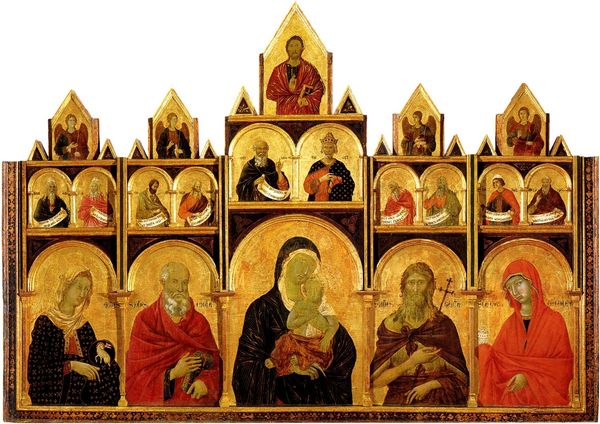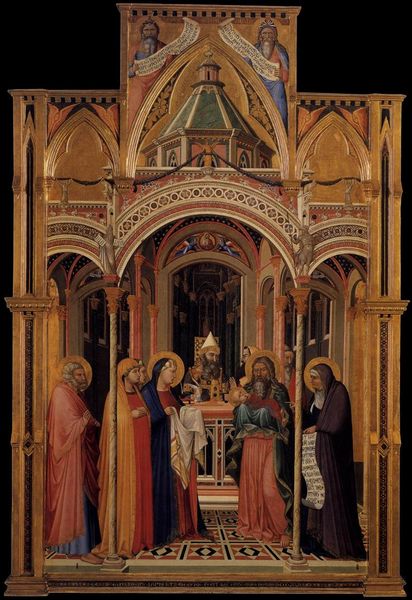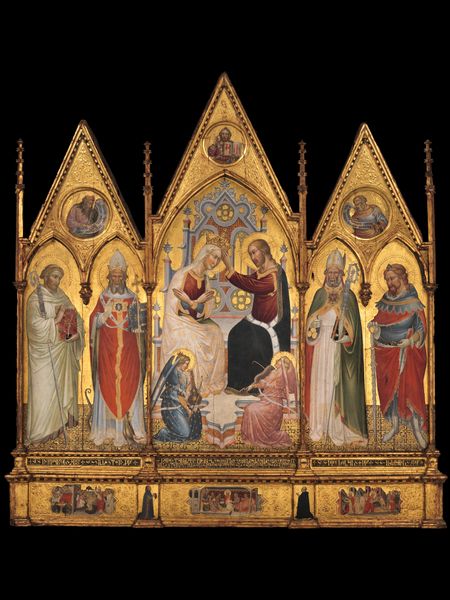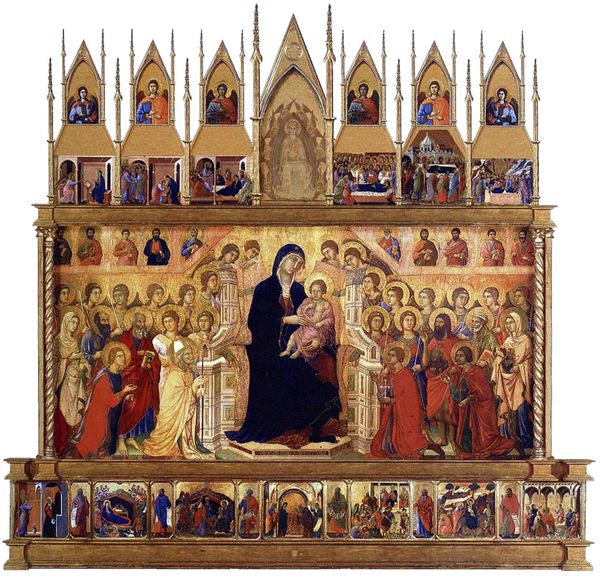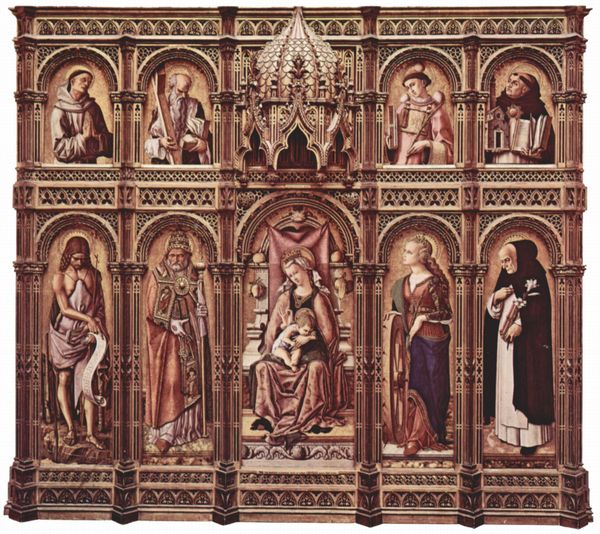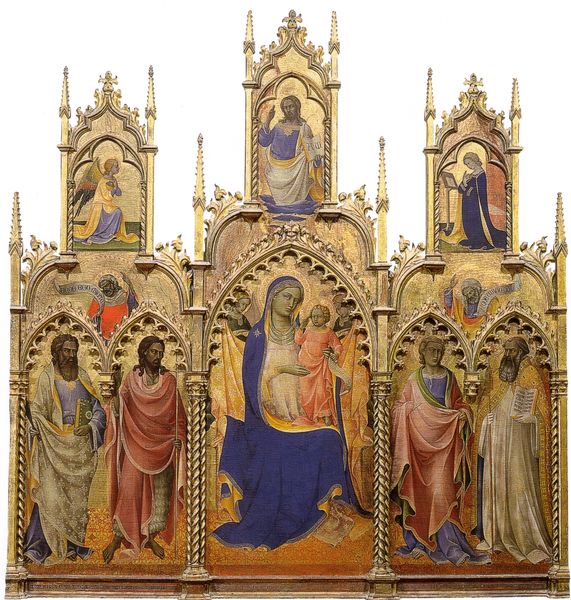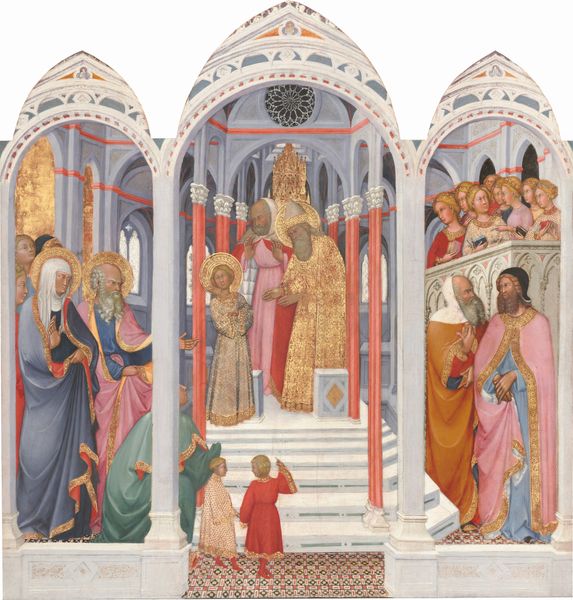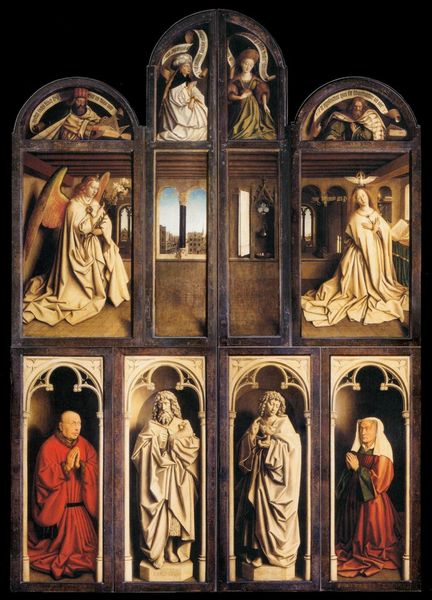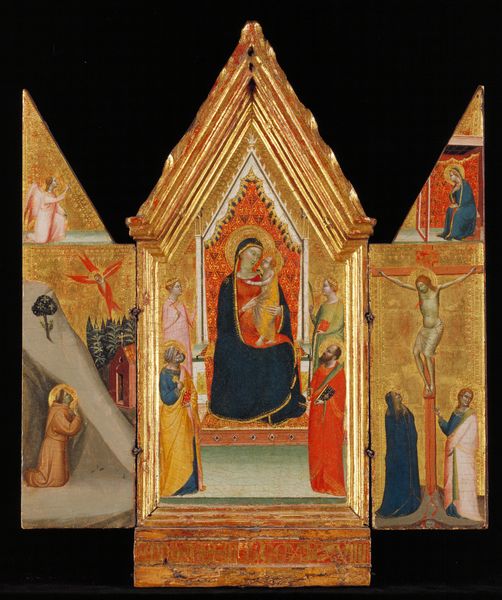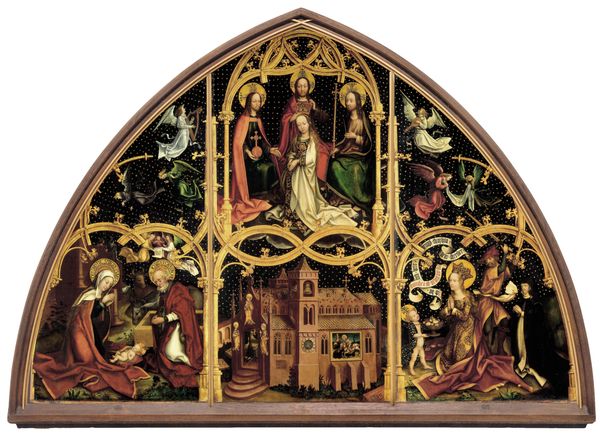
panel, tempera, painting, architecture
#
portrait
#
medieval
#
panel
#
tempera
#
painting
#
sculpture
#
sienese-school
#
holy-places
#
figuration
#
historic architecture
#
traditional architecture
#
arch
#
architecture
#
history-painting
#
italian-renaissance
#
early-renaissance
#
architecture
Copyright: Public domain
Pietro Lorenzetti painted this polyptych in Arezzo, Italy, sometime before his death in 1348, and it is a glorious example of Sienese art. Painted during a time of intense religious fervor, this altarpiece would have served as a focal point for prayer, and a tool for reinforcing Christian doctrine. But let's consider the central panel: the Madonna and Child. Notice the tender way Mary holds Jesus, her gaze averted as if pondering his destiny. Here, Mary isn’t just an ideal, but a mother, embodying the feminine role valued in the religious and social fabric of the time. The surrounding saints, each with their own stories of faith and sacrifice, serve as models for viewers. Lorenzetti's polyptych is not merely a religious artifact. It is an emotional bridge that encourages the viewer to reflect on their own place within a complex world, and asks them to consider the human dimensions of faith.
Comments
No comments
Be the first to comment and join the conversation on the ultimate creative platform.
